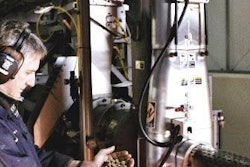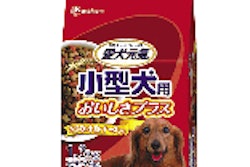Recent events in the petfood industry have caused many petfood manufacturers to revisit their existing programs for mitigation of potential problems with mycotoxin contamination. In my view, it's hard for a company to be too careful, because the price to pay (economic and otherwise) if the system fails, can be devastating, not only to the company involved but also to the industry as a whole.
Thus, a good understanding of the sources and reasons for contamination and an effective monitoring system for ingredients and products are paramount. Part of this understanding must be knowledge of the regulatory issues surrounding mycotoxin contamination of petfood.
FDA guidance
The US Food and Drug Administration (FDA) has issued guidance for three types of mycotoxins: Aflatoxin, fumonisin and deoxynivalenol (commonly called vomitoxin, or DON). This isn't an exhaustive list of potential contaminants, though; and other mycotoxins (e.g., ochratoxin, zearalenone) also can be troublesome. However, at present FDA handles contamination issues with mycotoxins, other than the three mentioned above, on a case-by-case basis.
A Compliance Policy Guide on "action levels" for aflatoxin was first issued in 1979, with the last revision in 1994. The FDA website address that takes you to that document is http://www.fda.gov/ora/compliance_ref/cpg/cpgvet/cpg683-100.html. It provides specific maximum tolerable amounts for aflatoxin in various feedstuffs (e.g., corn, cottonseed meal, and peanut products) intended for various species. Action levels for petfood fall under the "all other" category, which is set at 20 parts per billion (ppb). Importantly, this level applies to the total aflatoxin content (B1 + B2 + G1 +G2).
For fumonisin, there's a 2001 "Guidance for Industry" document that can be found at http://www.fda.gov/cvm/fumonisin.htm. Again, petfoods fall under the "all other" category. The guidance recommends a total fumonisin (FB1 + FB2 + FB3) content in corn and corn by-products intended for petfoods not to exceed 10 parts per million (ppm). The further stipulation is that corn or corn by-product not exceed more than 50% of the petfood formulation.
Unfortunately, the 1993 letter to state agricultural directors from FDA regarding advisory levels for vomitoxin in animal feed is not available on FDA's website. However, I'm sure that if you contacted the Division of Animal Feeds in FDA's Center for Veterinary Medicine a copy would be happily provided. The advisory level for grains and grain by-products intended for petfood is 5 ppm vomitoxin, with the presumption that the ingredient does not comprise more than 40% of the petfood product.
Other important notes
As I understand FDA policy on the matter, manufacturers are NOT allowed to dilute a commodity containing excessive amounts of a mycotoxin in order to bring it below any existing guidance level. For example, if your shipment of corn is found to contain 20 ppm fumonisin, you cannot arbitrarily decide to cut it in half with uncontaminated corn to bring the average content down to the 10 ppm recommendation, then go on to merrily include that mixed corn in your petfood product. Similarly, you aren't allowed to use a grain containing 10 ppm vomitoxin in a petfood based on a justification that the grain ingredient is to comprise only 20% of the product instead of the 40% presumed in the FDA advisory letter.
Manufacturers may also be aware of products on the market intended to bind or inactivate mycotoxins. It is my understanding that these substances or processes are NOT approved by FDA for these purposes (http://www.fda.gov/AnimalVeterinary/NewsEvents/CVMUpdates/ucm131675.htm). Thus, a petfood company that uses these products, particularly in lieu of a sound monitoring program, does so at its own risk.
Hopefully, a good monitoring system will detect any excessive levels of mycotoxins in incoming ingredients and allow you the opportunity to reject the load. However, if for some reason you're stuck with a shipment of contaminated material, or have already used that material in a petfood, it is prudent to seek guidance on how to dispose of the ingredient or product safely and appropriately.
In some cases, FDA may agree to a diversion request where at least some of its value can be recouped. Information on diversion requests can be found at: http://www.fda.gov/ora/compliance_ref/cpg/cpgvet/cpg675-200.html.


















